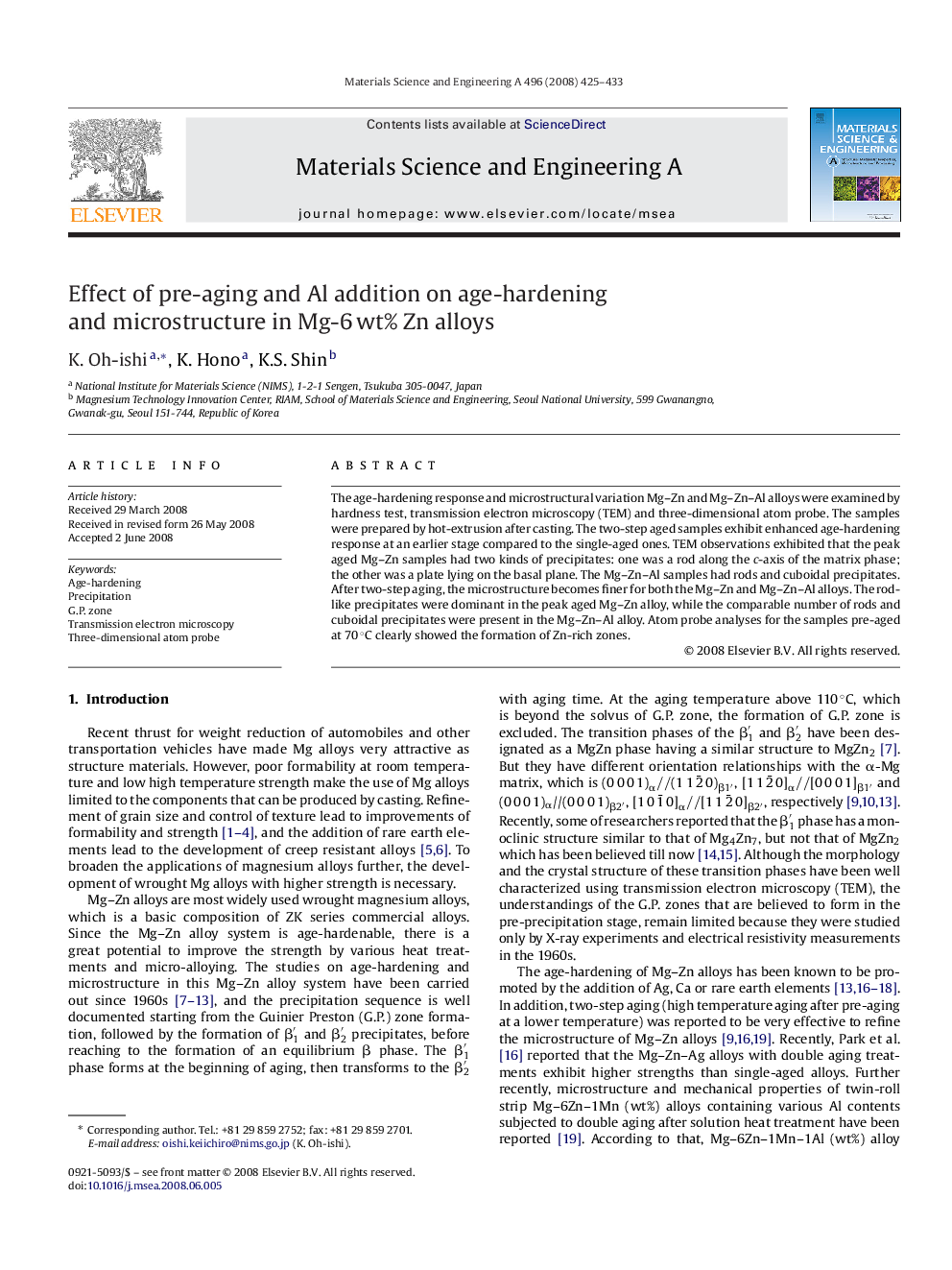| Article ID | Journal | Published Year | Pages | File Type |
|---|---|---|---|---|
| 1581864 | Materials Science and Engineering: A | 2008 | 9 Pages |
The age-hardening response and microstructural variation Mg–Zn and Mg–Zn–Al alloys were examined by hardness test, transmission electron microscopy (TEM) and three-dimensional atom probe. The samples were prepared by hot-extrusion after casting. The two-step aged samples exhibit enhanced age-hardening response at an earlier stage compared to the single-aged ones. TEM observations exhibited that the peak aged Mg–Zn samples had two kinds of precipitates: one was a rod along the c-axis of the matrix phase; the other was a plate lying on the basal plane. The Mg–Zn–Al samples had rods and cuboidal precipitates. After two-step aging, the microstructure becomes finer for both the Mg–Zn and Mg–Zn–Al alloys. The rod-like precipitates were dominant in the peak aged Mg–Zn alloy, while the comparable number of rods and cuboidal precipitates were present in the Mg–Zn–Al alloy. Atom probe analyses for the samples pre-aged at 70 °C clearly showed the formation of Zn-rich zones.
